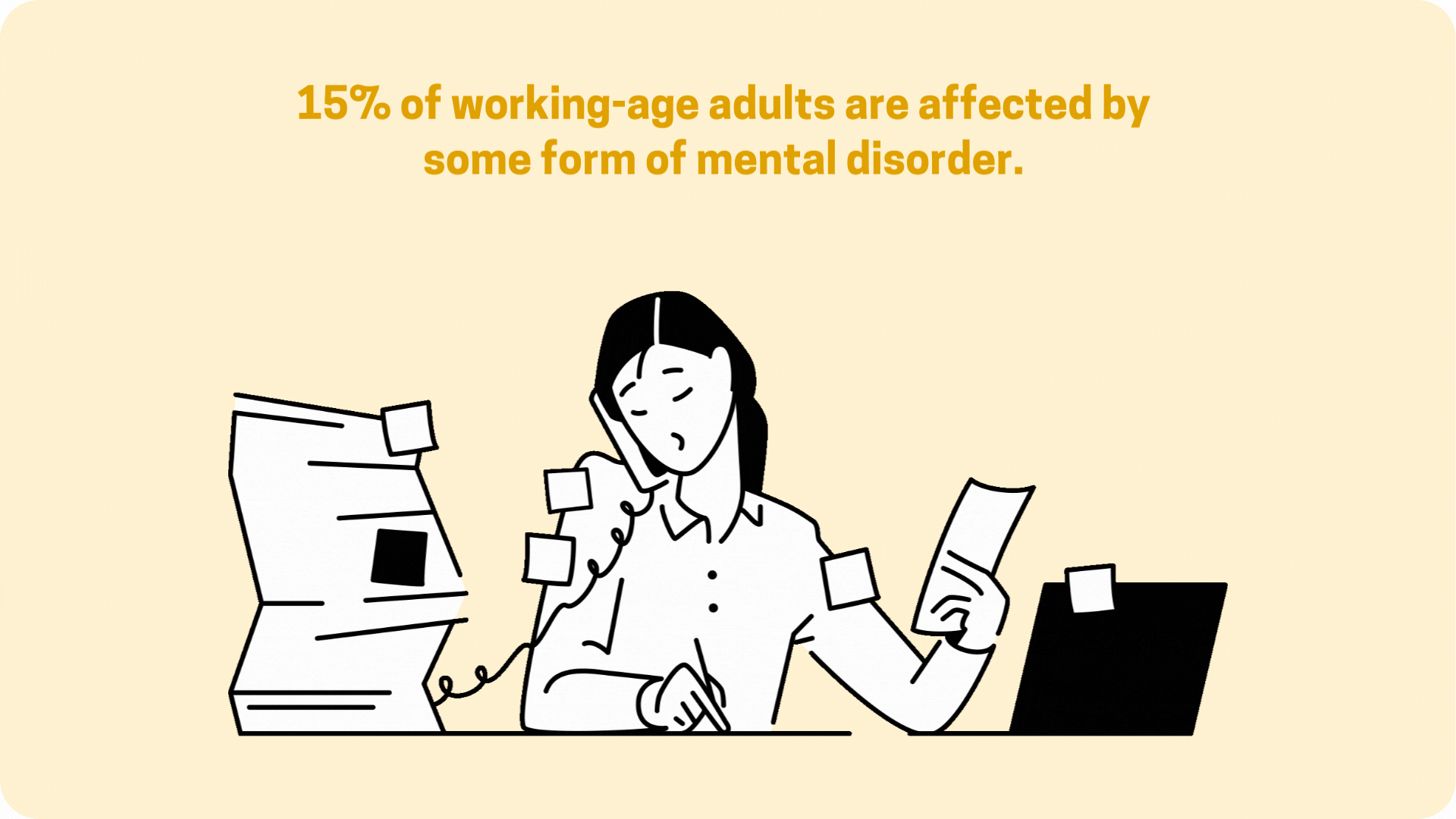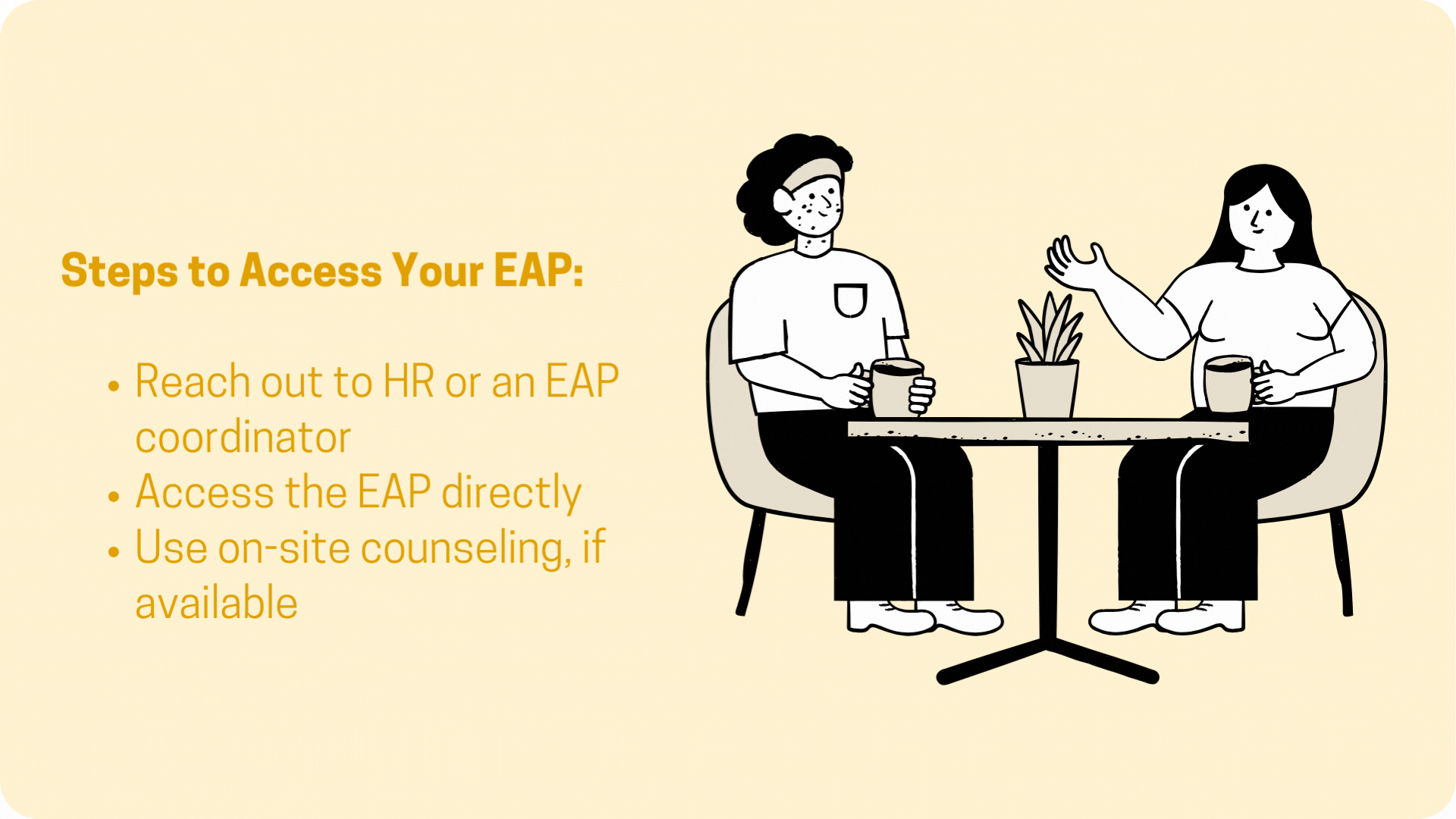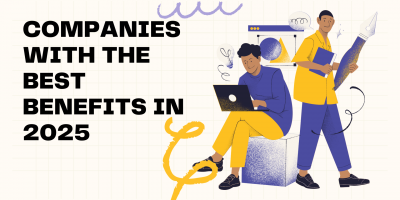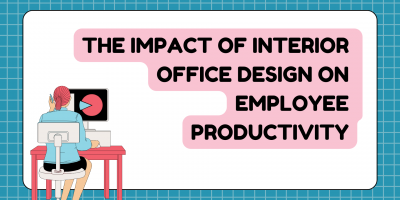
40+ Child Care Statistics & Trends in the U.S.
Uncover the latest insights into child care in the US with our 40+ essential statistics, providing a detailed look at the state of child care services, accessibility, and family dynamics.

Between their accessibility, convenience, and numerous benefits, employee assistance programs (EAPs) can become a lifeline in times of need, providing workers with confidential support.
Shortlister’s annual Wellness Trends Report shows that despite a slowing momentum a year prior, 2024 was a thriving year for EAPs, reaching their highest point since 2021.
This surge in popularity is hardly unexpected, especially given that workplace stress has reached epidemic proportions, affecting 77% of U.S. workers.
As employers prioritize their workers’ well-being and mental health, we look at how employees can access their employee assistance program benefits to receive support for personal, family, and work-related challenges.



An EAP is a voluntary, confidential service that offers employees free support for personal and work-related issues, including counseling, referrals, and follow-up services. Depending on the provider and the plan, they deliver different benefits, each addressing an individual challenge, such as stress, substance abuse, mental health, etc.
Employees should have a good grasp of how EAPs work – what benefits they offer, who’s eligible, and what services are available – to make informed choices about when and how to take advantage of the program.
So how do they work?
Finally, to access their employee assistance program benefits, employees can contact the designated person directly and get more information on their available services and how to use them.
While the exact details of each EAP program depend on the agreement between the provider and employer, standard services often include mental health counseling, legal and financial guidance, and work-life resources.
These are designed to provide employees with confidential support and practical solutions for many personal and work-related concerns.
According to data from the World Health Organization, 15% of working-age adults are affected by some form of mental disorder, making mental health in the workplace a pressing issue.
At the same time, tackling anxiety, depression, and behavioral health issues is often central to EAPs.
This support, usually in the form of counseling, stress management, or mental health programs, helps employees maintain well-being, improve job performance, and address personal issues in a private and accessible way.

Work-life balance is another valuable EAP benefit, providing workers with resources and support to manage their personal and professional responsibilities.
This becomes imperative considering that studies show the positive impact of work-life balance on productivity and well-being – when employees manage this aspect well, they are healthier and more productive.
At the same time, happy employees who can balance work and personal life tend to be more self-motivated than those who struggle.
Examples of work-life balance EAP services include:
Financial and legal services, as part of an employee assistance program, provide employees with access to expert advice on personal matters. In fact, according to some resources, they were the most common reason for seeking support from EAPs in recent years.
For example, financial services may include guidance on budgeting, debt management, retirement planning, and saving for significant life events, which can alleviate financial stress.
On the other hand, legal services often offer consultations for issues such as family law, wills, or tenant disputes, giving employees peace of mind when dealing with personal legal matters.
Finally, the health and wellness aspects of an EAP are a direct benefit of the services we mentioned earlier. They give employees holistic support, from medical advice, mental health, and substance abuse support to financial counseling or parental benefits.
Coupled with health coaching, nutrition guidance, and fitness planning, these allow the workforce to manage their overall well-being better, whether coping with chronic conditions or working toward long-term wellness goals.
Employees can easily access the support they need from their EAP through several convenient channels. Whether by contacting HR, reaching out directly, or using an online platform, the process should be straightforward, confidential, and accessible for all.
In some cases, access to the EAP may come through a referral from a manager or supervisor, who can recommend the program if they identify a need for support.

A significant benefit of employee assistance programs is their strict code of confidentiality across all levels, including:
Beyond the ethical responsibilities of clinicians and counselors to protect their client’s privacy, an EAP confidentiality law was enacted in 2022, further protecting the privacy of workers participating in such a program.
The law prevents employers from accessing or using identifiable information, and employee participation cannot affect their job security, promotions, or disciplinary actions.
However, it allows exceptions, such as when attendance is required for employment or addressing safety concerns.
For employers, maximizing their EAP means fully leveraging the program to improve employee well-being and productivity.
This process involves tailoring the service to meet workers’ needs, promoting accessibility, ensuring qualified professionals are involved, tracking key performance metrics, and using insights to drive improvements in individual and organizational outcomes.
For employees, it means taking full advantage of the program’s services.
Making the most of employee assistance program benefits involves accessing the support they need, whether for personal or professional challenges, using available resources, and getting help from qualified professionals to address issues before they become more significant.
As a result, they should feel supported, relieve stress, and stay productive.
As the workforce navigates employee assistance program benefits, they might have additional questions or concerns about their use.
Below, we answer some of the most common ones.
EAP benefits are usually free of charge for employees and their families. The cost generally falls on the employer as part of the company’s employee benefits package. It depends on the number of participants, the type and scope of services the program covers, and the provider.
Confidentiality is at the core of EAPs, meaning employees get complete privacy when using a service. Employers, managers, HR, or health insurance carriers will never know if and when an individual uses the employee assistance program benefits, nor will it appear on the Electronic Medical Record.
It depends on the specifics of the employer’s contract with the EAP provider. Some, but not all, plans expand the access to support to immediate family members and dependents. The HR department or EAP representative should have detailed information regarding this matter.
EAP counseling offers short-term, employer-funded support for employees dealing with personal or work-related issues affecting their performance. In contrast, regular therapy addresses a broader range of mental health concerns and typically involves longer-term care.
EAP counselors may also refer clients to external services when needed.
It depends on the provider. Many EAP services have the standard 9 to 5 work hours, while others may expand their assistance to later in the day for crisis assistance or appointments. Some providers also offer 24/5 or 24/7 aid to employees.
If an employee needs ongoing support beyond the EAP capacity, their counselor will likely refer them to outside resources like a therapist or specialist. However, any costs outside the EAP’s coverage would typically be the employee’s responsibility.
Employers choose the provider they want to work with. Once selected, employees can access the EAP services and choose their counselor.
The provider offers a curated list of professionals who meet the criteria based on the individual’s location, needs, and preferences. The employee then makes the final decision and can change it if unsatisfied with the selected counselor.
Many EAPs offer virtual or telehealth counseling as part of their programs, but not all do. Depending on the provider, they may cover in-person sessions, phone consultations, or virtual options.
However, it’s helpful to consider EAP alternatives, such as separate telehealth services, virtual counseling, or wellness programs, to complement existing plans for a more holistic offering.
An EAP emergency involves urgent situations, like personal or family crises, severe emotional distress, or other urgent mental health concerns that require immediate attention. In a crisis, a counselor can provide immediate support or refer employees to emergency services or another professional for help.
Since HR, managers, or the employer can’t know whether an employee is using an EAP service, this does not affect their career. However, receiving support for personal and work-related issues can improve work productivity, which will ultimately have a positive impact on performance.
If employees are unsatisfied with their counselor, they can contact the EAP and request a change, and the provider should ensure they’ll get the most appropriate choice.
It depends on the provider, but the appointments are typically scheduled within 3 to 5 business days. If it’s an emergency, they may be scheduled on the same day or within 24-48 hours.
Disclosure: Some of the products featured in this blog post may come from our partners who compensate us. This might influence the selection of products we feature and their placement and presentation on the page. However, it does not impact our evaluations; our opinions are our own. The information provided in this post is for general informational purposes only.
Content Writer at Shortlister
Browse our curated list of vendors to find the best solution for your needs.
Subscribe to our newsletter for the latest trends, expert tips, and workplace insights!

Uncover the latest insights into child care in the US with our 40+ essential statistics, providing a detailed look at the state of child care services, accessibility, and family dynamics.

Which companies are leading the way in 2025 with benefits that go beyond salaries to truly support employees’ health, finances, and work-life balance?

The journey towards a healthier workforce is an ongoing process, but the positive outcomes derived from these wellness initiatives offer a compelling blueprint for the future of work.

How does interior office design impact employee productivity, from desk layout to lighting choices?
Used by most of the top employee benefits consultants in the US, Shortlister is where you can find, research and select HR and benefits vendors for your clients.
Shortlister helps you reach your ideal prospects. Claim your free account to control your message and receive employer, consultant and health plan leads.